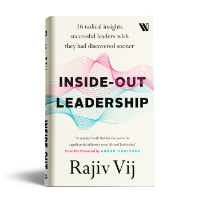
The survival and evolution of human beings rests on their unparalleled ability to think. Descartes’ reflection, ‘I think, therefore I am’, has forever reinforced thought to be the very foundation of human existence. As humans increasingly rely on their minds, the prefrontal cortex, the thinking part of the brain, has actually grown in size and its capability.
Yet, this powerful gift does not automatically lead to gaining insights or acquiring wisdom – in fact, usually, it comes in the way. It is not the ability to think, but to consciously stop thinking, that’s most valuable. That alone paves the way for self-realization and singularly makes the human form precious.
Limitations of our thoughts
Our thinking capability is severely limited. Our thoughts are a result of our conditioned beliefs and are thus significantly restricted by our personality orientation, environment and experiences. As author Anais Nin noted, ‘We don’t see things as they are, but as we are’.
Goaded by our success with thinking through life’s mundane problems, we misconstrue that to be the most effective process of arriving at solutions. Consequently, we tend to over-think things – overlooking the fact that this approach employs merely a fraction of our mental capacity.
Besides, living in the head keeps us away from listening to our heart and engaging deeply in our relationships; the emotional noise created by our incessant mental chatter restricts us from performing at our peak potential.
The power of the subconscious
Far more powerful than our active mind is our subconscious mind. A deep reservoir of knowledge, spanning many lifetimes, it is a powerful gateway to the collective wisdom of the universe. Creating conscious moments of empty spaces between thoughts allows us to switch off from our active mind and access the subconscious. That’s what leads to new insights, peak performance and spiritual growth.
Creative people vouch for getting their most inspirational ideas in those moments. Mozart and Michelangelo have described it such. Scientists are…




















